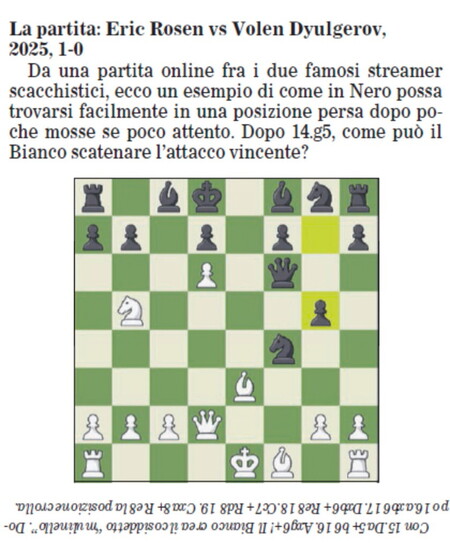The Halloween Gambit That Scares So Many Players


PHOTO Ansa
Chess approached philosophically
The discovery of a seemingly static but surprising opening in a Leipzig city club in 1888 was replicated by the first server that allowed players to compete online from all over the world in 1996: "players are as scared as they would be by a Halloween mask."
On the same topic:
What does chess have to do with Halloween and computers? A centuries-old story connects them. Leipzig, 1888. The world of chess is in a state of romantic turmoil; on every board in Europe, attempts are being made to replicate the spectacular sacrifices and pyrotechnic combinations of the early chess legends (Morphy, Steinitz, Anderssen). This isn't mere aggression, but a completely different conception of the game, one to which we contemporaries, "polluted" by libraries of positional thinking, have long been unaccustomed. The game develops and evolves in the halls of prestigious tournaments, but also in the humbler rooms of club players. In the Leipzig city club, a curious innovation is being experimented with : after just three moves, in an opening notoriously considered static, the possibility of a shocking piece sacrifice is discovered , giving White considerable initiative. Chess player Oskar Cordel disparagingly called it the "Müller-Schulze gambit" (the German equivalent of Mr. White-Mr. Smith), indicating the "plebeian" origins of a gambit that was so surprising, yet easily refuted, he claimed, by more experienced players. This judgment stuck, and for over a century, the gambit remained relegated to the footnotes of chess textbooks: an amusing aside, but nothing more.
Let's fast forward to 1996. It's the year computers entered the world of chess, the year of the first match between reigning champion Garry Kasparov and the DeepBlue engine, and also the fifth anniversary of the Internet Chess Server , the first server that allowed players to compete online from all over the world. Steffen Jakob , an amateur, but above all a chess engine developer, comes across this very gambit in one of his online games. He feels ridiculed, as if his opponent wasn't taking the game seriously, but he's above all intrigued. Our story accelerates, and Jakob begins to do his research. He discovers that this gambit exists, and has an infamous name, so he intends to rename it the "Halloween gambit," because "many players are shocked, scared as if by a Halloween mask, mentally prepared for a boring four knights, and find themselves facing Nxe5."

The match: Eric Rosen vs. Volen Dyulgerov, 2025, 1-0 From an online match between the two famous chess streamers, here's an example of how Black can easily find himself in a losing position after just a few moves if he's not careful. After 14.g5, how can White launch a winning attack?
More on these topics:
ilmanifesto





